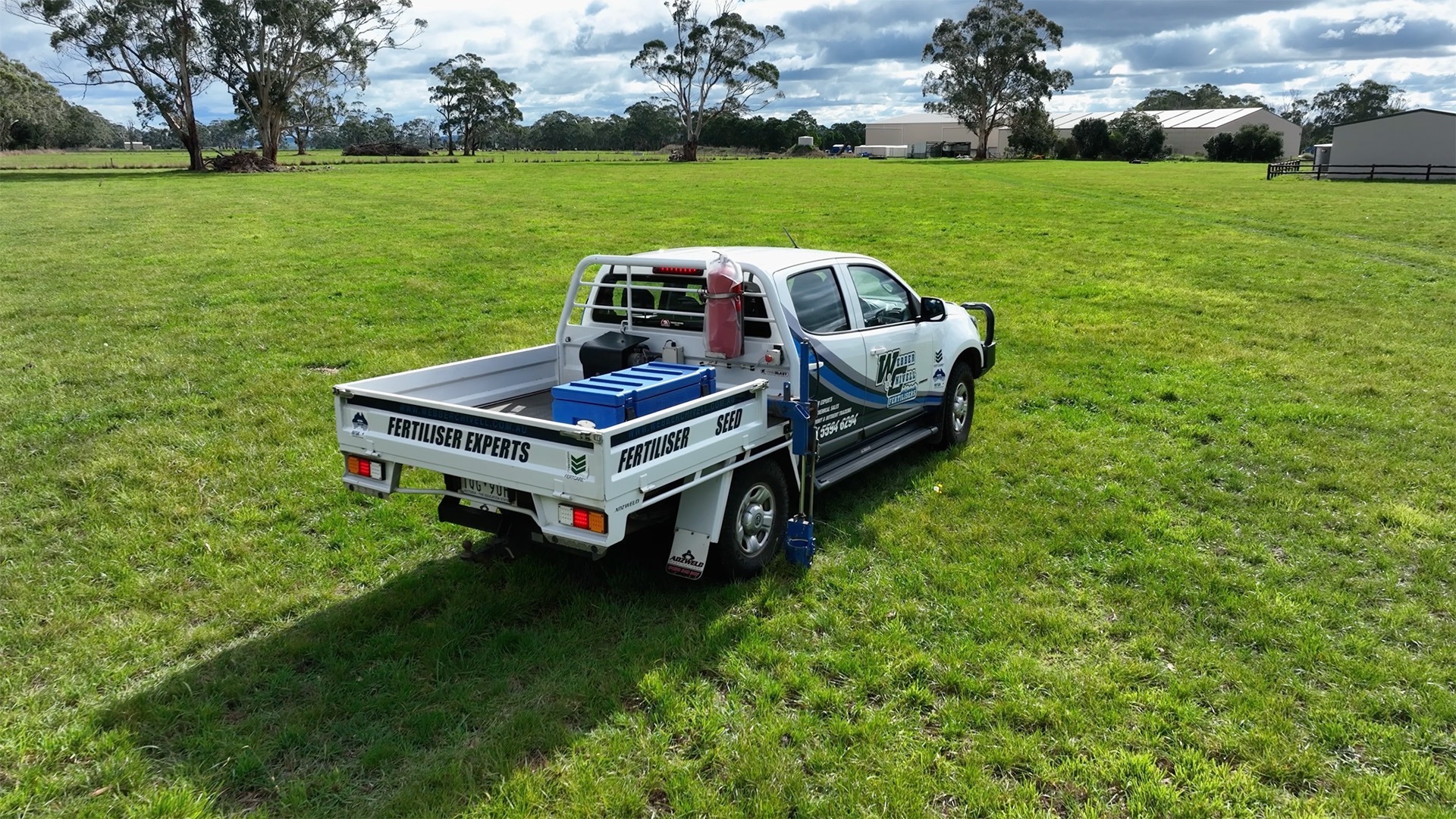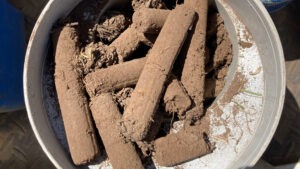Understanding what is occurring in your soil is the beginning of the success or failure of your pastures. Annual soil tests can be taken to see trends occurring, fluctuations in major nutrients, pH CaCl2 levels, salts and soil sodicity. Many contributing factors such as removal of nutrients through grazing, hay or silage, diminishing nutrients due to leachable factors (potassium and sulphur) and excessive rainfall play a major role in more growth, more nutrient uptake and removal. Our Agronomists main aim is to monitor and determine if fertiliser application is adequate for nutrient removal and making suitable, strategic changes before levels increase or decrease substantially.
Samples should be taken 6-8 weeks post fertiliser application, hence why your agronomist is on farm January through to late March sampling your farm and creating programs for the season ahead. Samples are sent through to (an accredited ASPAC & NATA lab) Nutrient Advantage, tested, analysed and a report is returned. Our agronomists are Fert Care accredited and have successfully completed their Agronomy in Practice studies. This is important as our agronomists are equipped with the right practices to recommend fertiliser programs as well as fertiliser placement on farm.
It is important to note, soil testing is one component to aiding in the success of your pastures, base fertility, species, drainage and grazing management are all contributing factors.
Common Trends seen in this year’s Soil Test Results:
Due to wetter seasons, extra growth on farm has been a major difference in comparison to previous drier years. This has seen more tonnes/ha grown and in return, producing milk, keeping condition on animals, or allowing for second silage cuts through to additional hay cuts on farm has seen more nutrients drawn from the soils.
What we are seeing, as a general theme (depending on area and farming enterprise):
Phosphorus (Olsen P) levels have seen a slight decrease.
Potassium levels have been maintained to elevated on a majority of soil types, however lighter soils have seen a slight decrease due to the increased rainfall.
Sulphur levels have been consistent year to year on heavier soil types, similarly to potassium, levels on lighter soils have lowered slightly. Agronomists placed MOPS90 (a product that carries potassium and an elemental sulphur (slower releasing)) on lighter soils, which aided in maintaining to increasing sulphur levels.
Electrical Conductivity (salt) and Sodicity % have risen in wet, heavier soil areas, due to the significant amount of rainfall consistently over summers and a decrease in drainage systems due to high volume in wetter months (eg winter).
pH CaCl2 levels were also seen to drop (more considerably on lighter soils) due to increased rainfall, fodder and silage removal.
This season’s drier summer has been greatly welcomed, where soils will ‘rest’ before the 2024 season begins. Mineralised nitrogen due to soil biology will be more noticeable as well as a break in insect and disease cycles. The agronomy team will continue to utilise the trial plots, acknowledge soil test data and history, researching products to help create a ‘best bang for buck’ on farm, being strategic of placement and discussing viable options on farm as per visual assessments.

